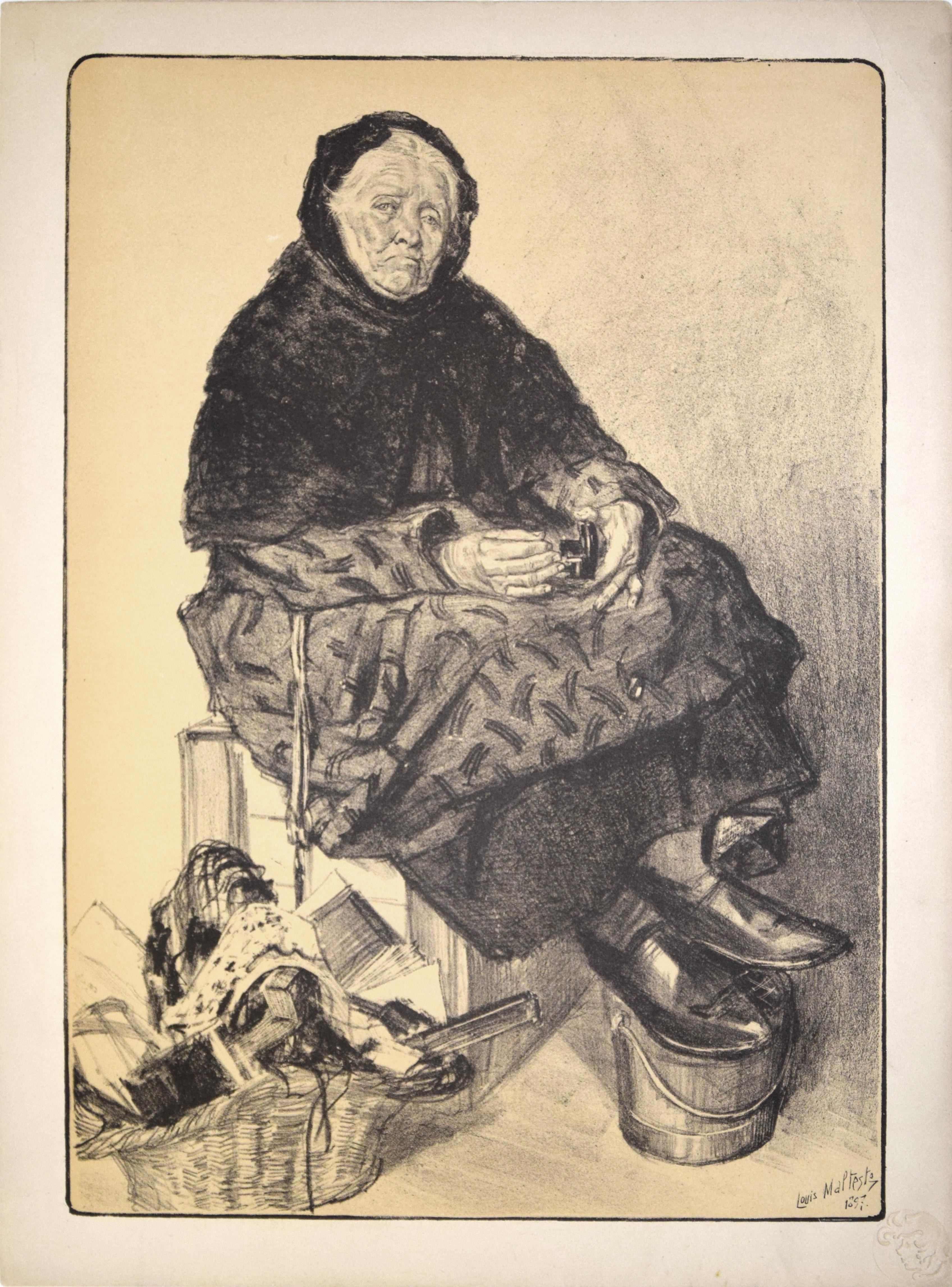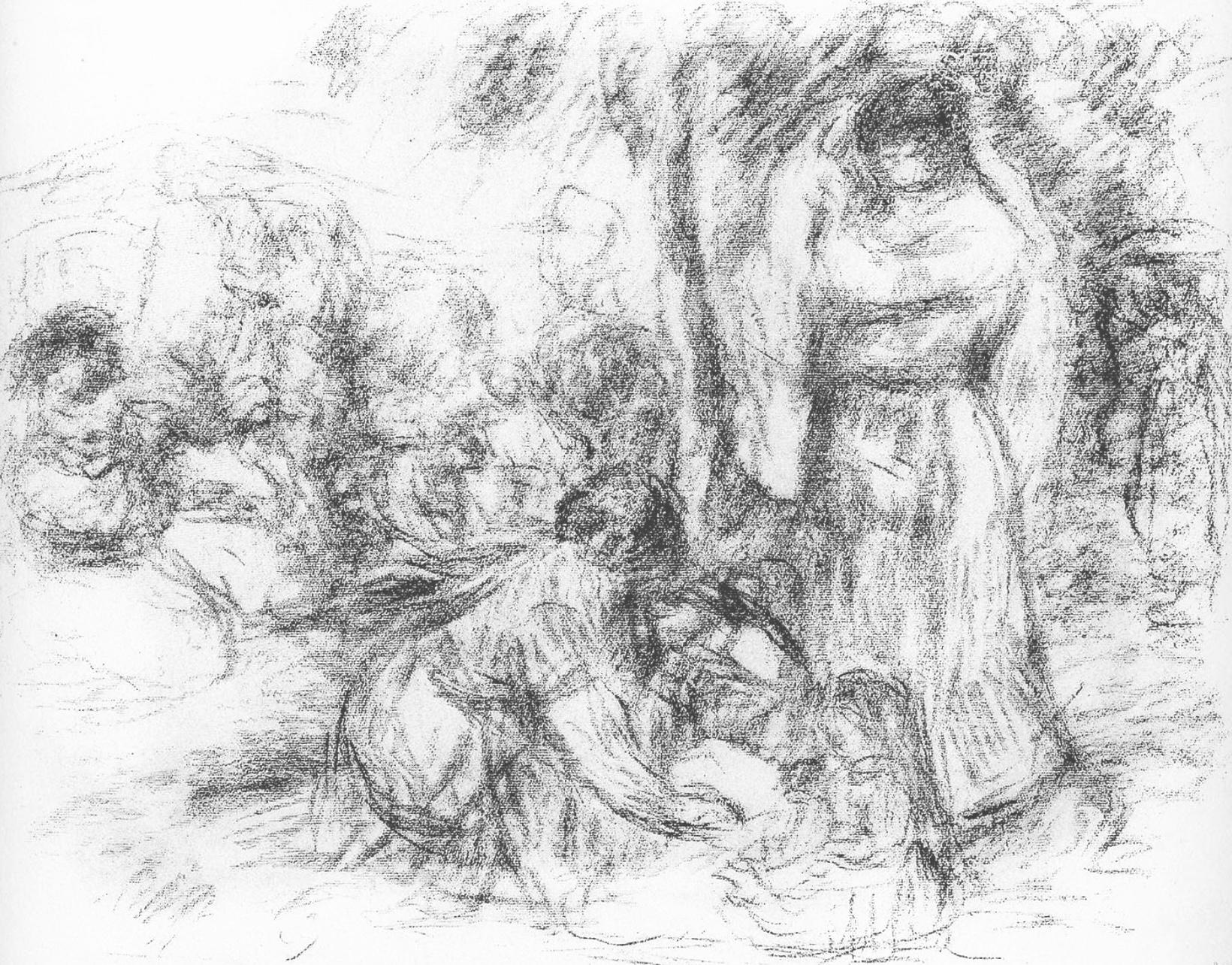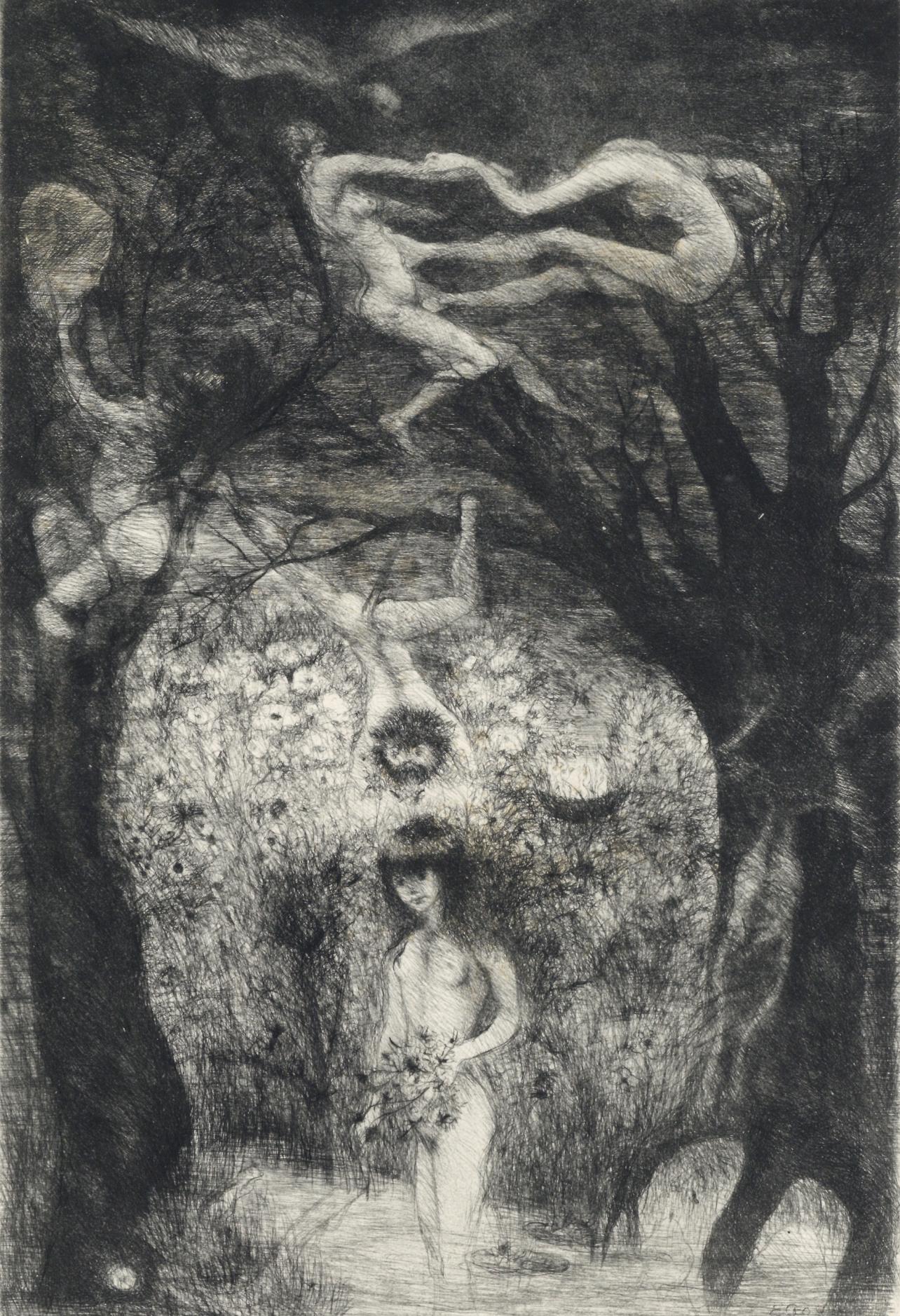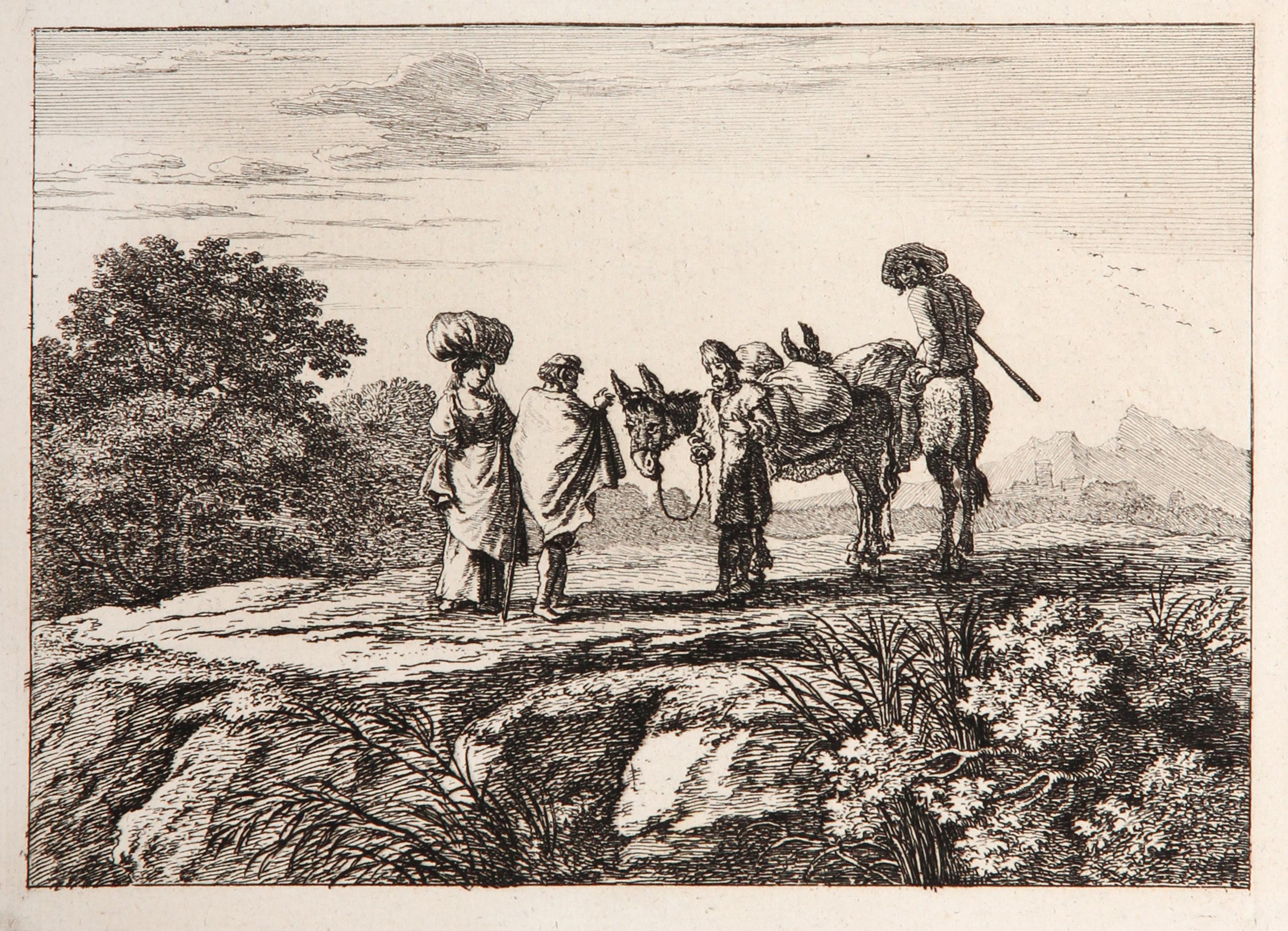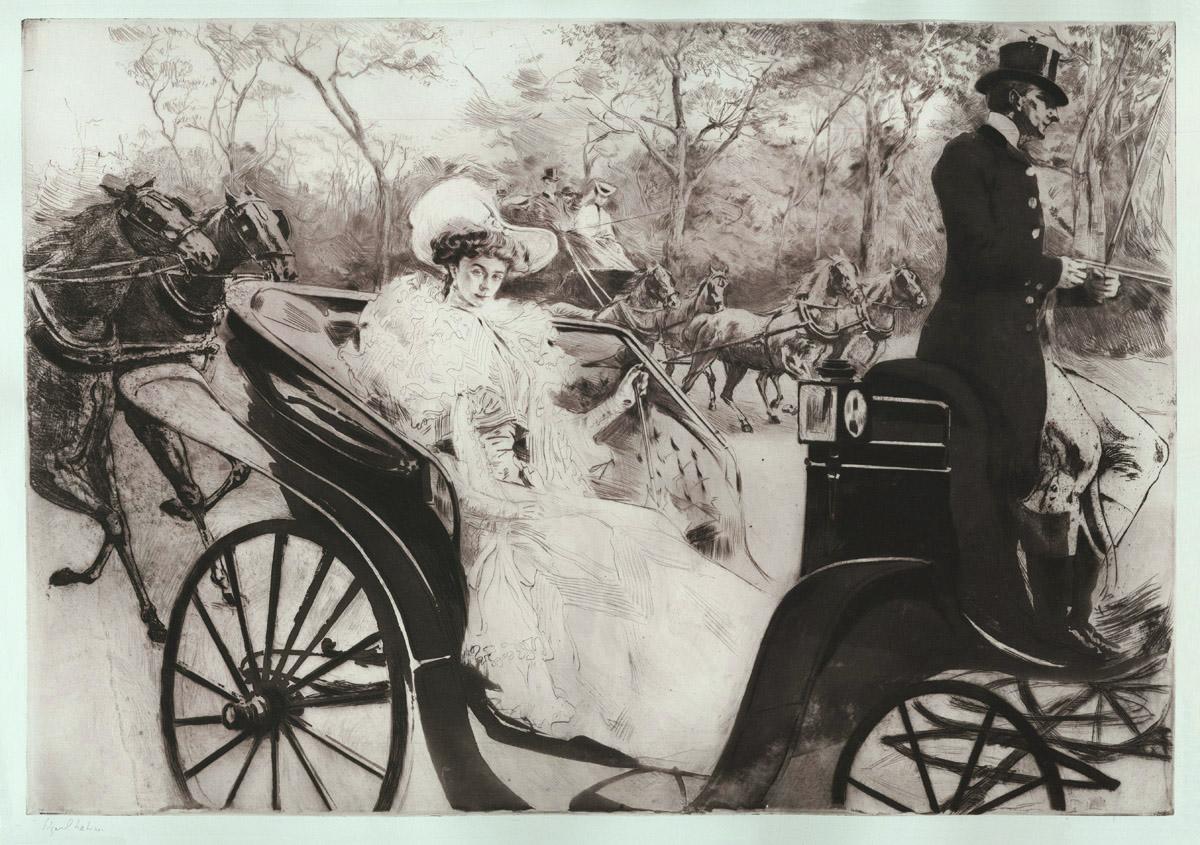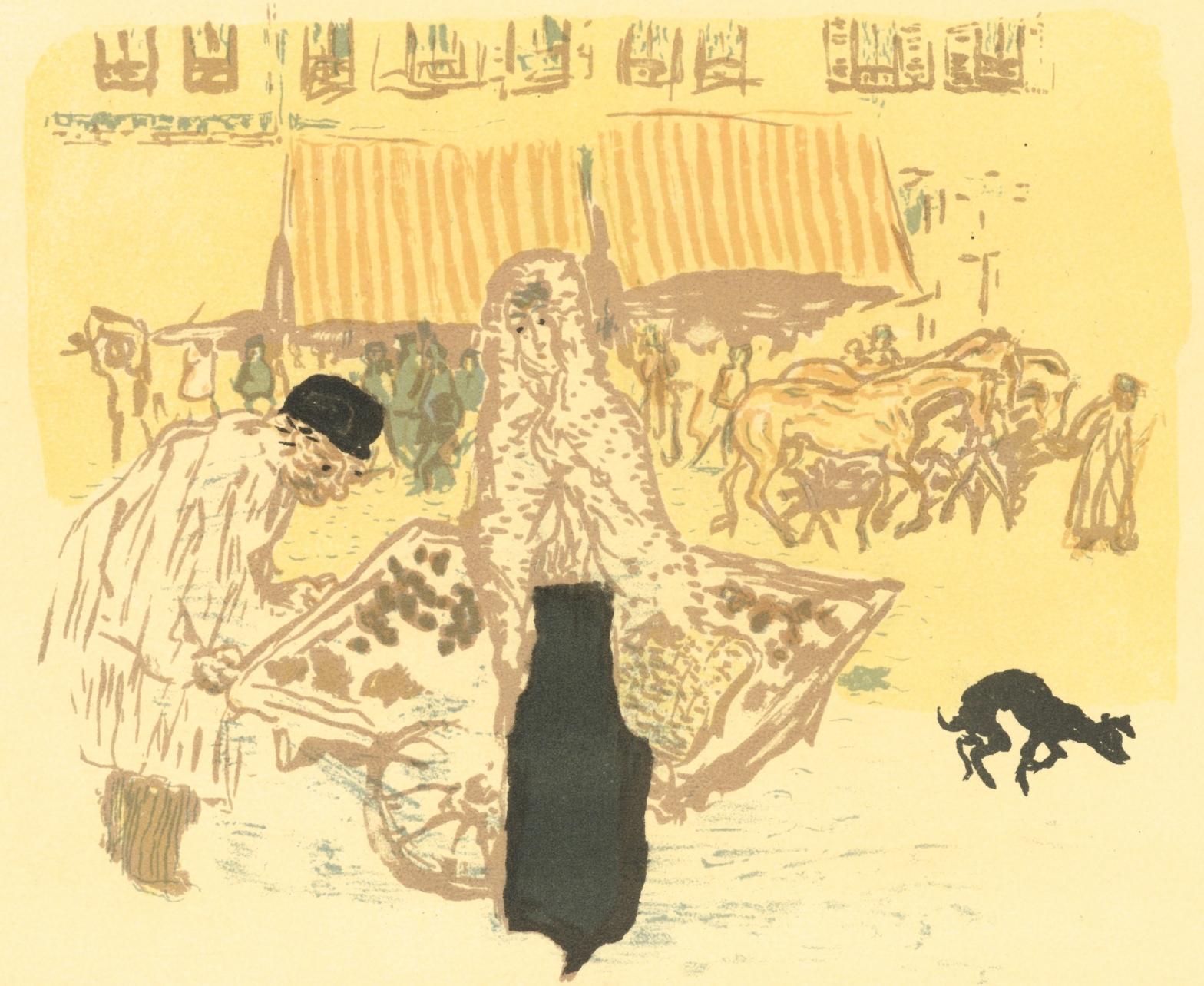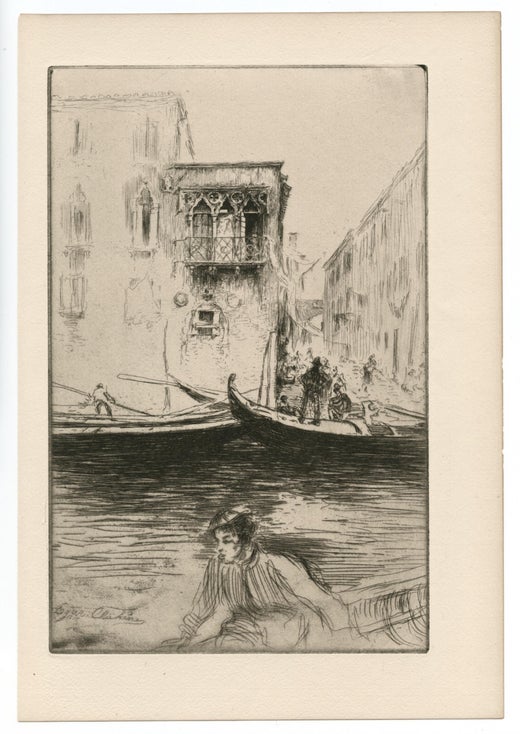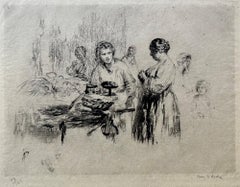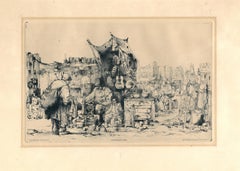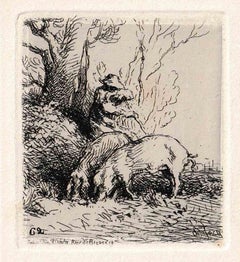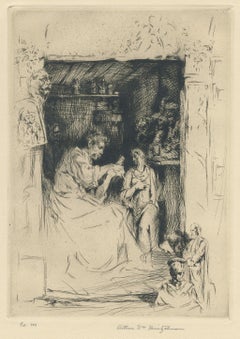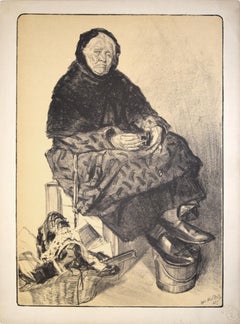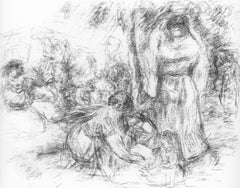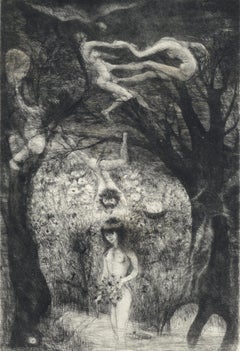Edgar ChahineLa Marchande des Quatres-Saisons1900
1900
About the Item
- Creator:Edgar Chahine (1874 - 1947, French)
- Creation Year:1900
- Dimensions:Height: 11.75 in (29.85 cm)Width: 13.75 in (34.93 cm)
- Medium:
- Movement & Style:
- Period:
- Condition:
- Gallery Location:Middletown, NY
- Reference Number:Seller: BH6891stDibs: LU1979211144792
Edgar Chahine
Edgar Chahine was born in Vienna, Austria to Armenian parents. At age 21, he decided to travel to Paris and pursue a career in fine arts. He studied painting under formal instruction at the Académie Julian, but his natural ability and his determination to express himself as an artist led him to a personal style based more on the reality of the streets of Paris than the confines of the classroom. Chahine began to experiment with the possibilities of printmaking at the age of 25. Although he had already achieved some success with his paintings, he became fascinated with prints and soon worked exclusively in this medium. His prints were very much in demand by collectors and the well known publisher Edmond Sagot quickly became his dealer. He won several medals and awards and received many commissions. Chahine's print œuvre is an equal representation of elegant Parisian men and women, Bourgeois society and more common scenes of country fairs and street life. His sympathetic depictions of children, beggars, circus performers and other often forgotten people were engaging and touched the emotions of the observer, while his portrayals of the more fashionable side of Paris accurately captured its "joie de vivre". The death of his fiancé plunged him into a deep depression, and he left Paris to travel through Italy. This voyage gave him the serenity and the inspiration to begin working with new enthusiasm, etching the day's drawings onto copper plates in his hotel room each night. He returned with new vigor and expanded his efforts to once again include pastels and oils in his work. This productivity was not to last, as the combination of terrible events in Armenia and Syria and the outbreak of World War I rendered Chahine unable to work. Not until his marriage in 1921 did he begin to make art again. In 1925, he became a French citizen and began a new burst of creative activity in fine prints and illustrated books. Many of Chahine's prints were lost in a fire in his atelier in 1926, and many more were destroyed in a flood in 1942.
- ShippingRetrieving quote...Shipping from: Middletown, NY
- Return Policy
More From This Seller
View AllEarly 20th Century French School Figurative Prints
Handmade Paper, Lithograph
Early 20th Century French School Landscape Prints
Handmade Paper, Drypoint, Etching
Mid-19th Century French School Portrait Prints
Etching, Handmade Paper
Early 20th Century Modern Interior Prints
Laid Paper, Drypoint, Etching
Early 20th Century French School Landscape Prints
Handmade Paper, Drypoint, Etching
Mid-19th Century French School Landscape Prints
Handmade Paper, Etching
You May Also Like
1890s Modern Figurative Prints
Lithograph
1950s Impressionist Figurative Prints
Lithograph
1940s Modern Landscape Prints
Engraving
Late 19th Century More Prints
Etching
Early 1900s Art Nouveau Figurative Prints
Drypoint, Etching, Aquatint
1950s Post-Impressionist Figurative Prints
Lithograph
